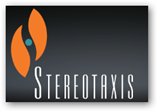If you have not taken a look recently at what is happening in cardiology technology, the company has a video to give you a glimpse on how cath labs are evolving. In watching the video, notice how touch and multiple screen use is part of the technology. With all the various recent developments in cardiology it helps to take a  look once in a while to keep on top of how you or someone you know could be treated in the case of a heart attack.
look once in a while to keep on top of how you or someone you know could be treated in the case of a heart attack.
About a year ago I had the opportunity to speak with Dr. Muhs, head of interventional radiology at Yale University and he did a very good job in bringing a lot of this technology to layman’s terms. With today’s technology, you may as a patient not be subjected to having your chest cut open but perhaps rather having what is called an “interventional procedure” instead. Interventional physicians = technology, they are married at the hip with today’s healthcare procedures and treatments, something we might want to give a little additional thought, as some still tend to see the 2 as separate entities. BD
Interview with Bart E. Muhs, M.D., Yale School of Medicine – Aneurysm Repair Surgery
Press Release:
ST. LOUIS, Jan. 12 /PRNewswire-FirstCall/ -- Stereotaxis (Nasdaq: STXS) announced that the Celsius® RMT ThermoCool® catheter has been approved by the U.S. Food and Drug Administration for use with Stereotaxis' magnetic navigation system for the treatment of Type 1 atrial flutter. The product is the fifth advanced ablation catheter resulting from the on-going co-development agreement between Stereotaxis and Biosense Webster to design and distribute magnetically enabled catheters for mapping and ablation.
The Celsius® RMT ThermoCool® catheter was granted CE mark for distribution in the European Union in October 2009.
The Celsius® RMT and NaviStar® RMT catheters are the only magnetic catheters accurately matched to the navigational software of the Niobe™ Magnetic Navigation System for optimal performance and highly precise catheter manipulation.
With the Celsius® RMT ThermoCool® catheter, the family of magnetic irrigated ablation catheters offers localized and non-localized technology. Localized catheters are used for more complex arrhythmias requiring 3D electro-anatomic mapping for precise diagnosis, whereas non-localized catheters are typically used for a broader array of arrhythmias which can be treated using basic imaging and ECG recordings.
Separately, the FDA approved all of Biosense Webster's magnetic catheters for use with the magnetic field strength of 0.1 Tesla, an increase of 25 percent, which is now available in Stereotaxis navigation systems. In European clinical evaluations conducted in the fourth quarter of 2009, clinicians noted that the new field strength enhanced catheter navigation in difficult to reach locations; enhanced catheter stability, especially near the antrioventricular valves; and improved catheter contact along the isthmus region of both atria.
"The 25 percent improvement in field strength was immediately appreciated to improve navigation and stability for a wide range of procedure types with and without 3D mapping," said Dr. Tamas Szili-Torok, Clinical Head of Electrophysiology at Erasmus Medical Center in Rotterdam, The Netherlands. "We have implemented 0.1T as the default setting at our institution."
"These two new approvals provide clinicians in the U.S. with access to important new enhancements for magnetic navigation that we believe will enable clinical success in a broader range of arrhythmias," said Michael P. Kaminski, Stereotaxis President and CEO.
About Stereotaxis
Stereotaxis designs, manufactures and markets an advanced cardiology instrument control system for use in a hospital's interventional surgical suite to enhance the treatment of coronary artery disease and arrhythmias. The Stereotaxis System is designed to enable physicians to complete more complex interventional procedures by providing image guided delivery of catheters and guidewires through the blood vessels and chambers of the heart to treatment sites. This is achieved using computer-controlled, externally applied magnetic fields that govern the motion of the working tip of the catheter or guidewire, resulting in improved navigation, shorter procedure time and reduced x-ray exposure. The core components of the Stereotaxis system have received regulatory clearance in the U.S., Europe and Canada.
About Forward Looking Statements
This press release includes statements that may constitute "forward-looking" statements, usually containing the words "believe," "estimate," "project," "expect" or similar expressions. Forward-looking statements inherently involve risks and uncertainties that could cause actual results to differ materially from the forward-looking statements. Factors that would cause or contribute to such differences include, but are not limited to, continued acceptance for the Company's products in the marketplace, competitive factors, changes in government reimbursement procedures, dependence upon third-party vendors, and other risks discussed in the Company's periodic and other filings with the Securities and Exchange Commission. By making these forward-looking statements, the Company undertakes no obligation to update these statements for revisions or changes after the date of this release. There can be no assurance that we will recognize revenue related to our purchase orders and other commitments in any particular period or at all because some of these purchase orders and other commitments are subject to contingencies that are outside of our control. In addition, these orders and commitments may be revised, modified or canceled, either by their express terms, as a result of negotiations, or by project changes or delays.
SOURCE Stereotaxis, Inc.
RELATED LINKS
http://www.stereotaxis.com





0 comments :
Post a Comment